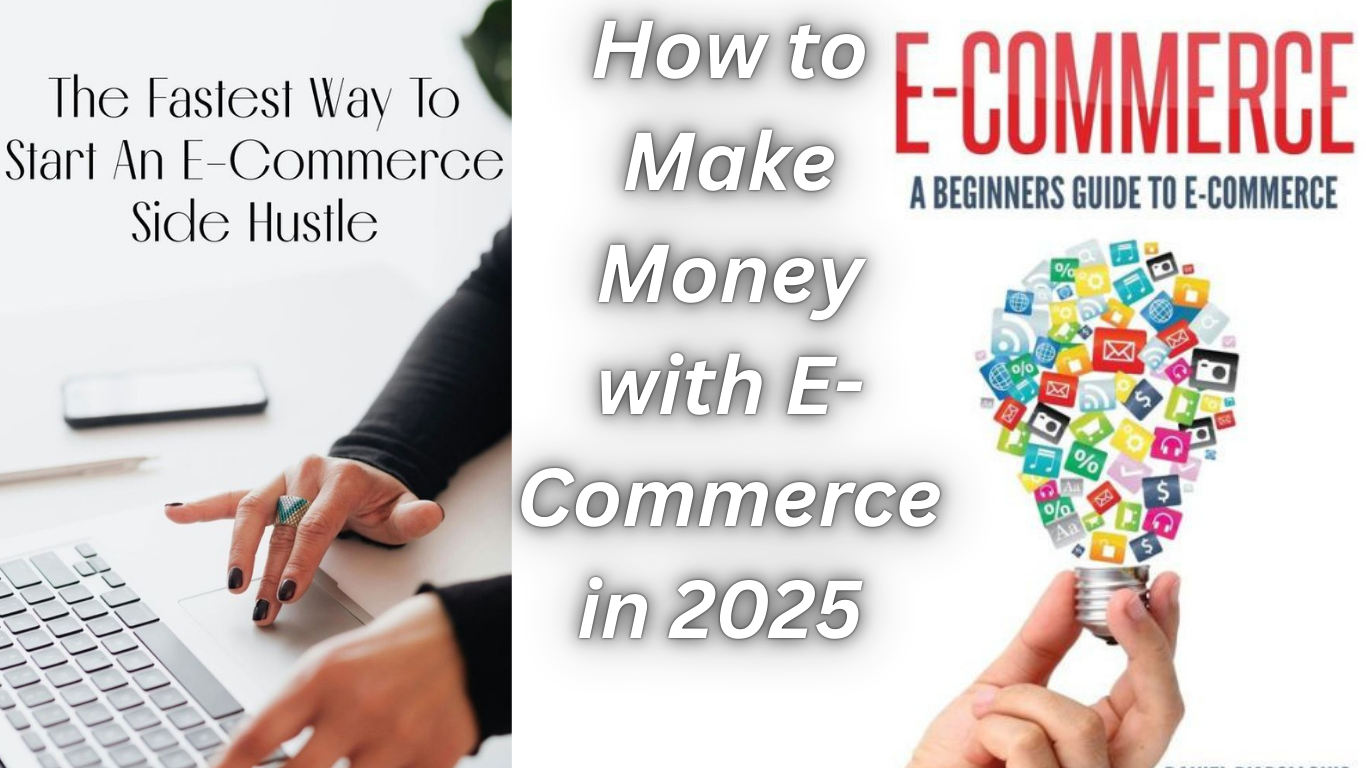Table of Contents
- Introduction to E-Commerce in 2025
- Why E-Commerce Remains a Powerful Money-Making Opportunity
- Top E-Commerce Business Models in 2025
- Dropshipping
- Print-on-Demand (POD)
- Private Label & Branding
- Subscription Boxes
- Digital Products & Online Courses
- Affiliate Marketing
- Social Commerce
- Amazon FBA & Walmart Marketplace
- AI-Powered E-Commerce
- Step-by-Step Guide to Launching Your E-Commerce Business
- Choosing the Right Niche
- Market Research & Competitor Analysis
- Selecting the Best E-Commerce Platform
- Sourcing Products & Suppliers
- Building Your Online Store
- Marketing Your Store in 2025
- Scaling & Automating Your Business
- Advanced E-Commerce Strategies for 2025
- Common Mistakes to Avoid
- Real-World Success Stories
- Final Thoughts & Future Trends
1. Introduction to E-Commerce in 2025
E-commerce continues to evolve rapidly, and 2025 is shaping up to be a transformative year. From AI-powered shopping experiences to blockchain-based payments, the digital retail landscape is full of innovation and opportunity.
With global sales projected to reach $7.4 trillion by 2025 (Statista), there’s no better time to start or scale your online business—whether you’re selling physical products, digital goods, or services.
2. Why E-Commerce is Still a Goldmine in 2025
- Low Startup Costs – No physical storefront needed.
- Global Reach – Sell to anyone, anywhere.
- AI & Automation – Tools like ChatGPT simplify content creation and customer support.
- Diverse Revenue Options – Combine multiple models like dropshipping and digital products.
- Social-First Shopping – Tap into buying trends on TikTok, Instagram, and more.
3. Best E-Commerce Business Models in 2025
1. Dropshipping
- How it works: You sell, suppliers ship.
- Ideal for: Beginners with minimal capital.
- Platforms: Shopify, Spocket, AliExpress
- Profit Potential: 20–50% margin
2. Print-on-Demand (POD)
- How it works: Sell custom designs on items like shirts and mugs.
- Ideal for: Creatives and influencers.
- Platforms: Printful, Teespring, Redbubble
- Profit Potential: $10–50 per item
3. Private Label & Branding
- How it works: Brand and sell generic products as your own.
- Ideal for: Long-term brand builders.
- Platforms: Alibaba, Amazon FBA
- Profit Potential: 50–200% markup
4. Subscription Boxes
- How it works: Curate products and ship monthly.
- Ideal for: Recurring income seekers.
- Platforms: Cratejoy, Subbly
- Profit Potential: $20–100 per box
5. Digital Products & Courses
- How it works: Sell e-books, courses, templates, or software.
- Ideal for: Experts and creators.
- Platforms: Teachable, Gumroad, Udemy
- Profit Potential: 80–95% margin
6. Affiliate Marketing
- How it works: Promote products, earn commissions.
- Ideal for: Content creators and bloggers.
- Platforms: Amazon Associates, CJ Affiliate, ShareASale
- Profit Potential: 5–50% per sale
7. Social Commerce
- How it works: Sell directly via platforms like TikTok or Instagram.
- Ideal for: Trend-savvy brands.
- Platforms: TikTok Shop, Instagram Shops
- Profit Potential: High on viral/impulse products
8. Amazon FBA & Walmart Marketplace
- How it works: List products, they handle fulfillment.
- Ideal for: Scalable product-based businesses.
- Profit Potential: $1,000–$50,000/month
9. AI-Powered E-Commerce
- How it works: Use AI for recommendations, chatbots, and pricing.
- Ideal for: Tech-forward entrepreneurs.
- Tools: ChatGPT, Jasper, Replika
- Profit Potential: Boost conversions 30–50%
4. How to Start Your E-Commerce Business (Step-by-Step)
Step 1: Pick a Profitable Niche
Trending Niches in 2025:
- Eco-friendly products
- Smart home & AI gadgets
- Health & wellness supplements
- Personalized gifts
- VR gear & accessories
Step 2: Do Market & Competitor Research
- Tools: Google Trends, Ahrefs, Jungle Scout
- Spy on competitors on Amazon, Etsy, TikTok Shop
Step 3: Choose Your E-Commerce Platform
- Shopify – Best all-around choice
- WooCommerce – Ideal for WordPress users
- BigCommerce – Great for growth & scaling
Step 4: Find Products & Suppliers
- Alibaba – Bulk sourcing
- Spocket – U.S./EU dropshipping
- Printful – Print-on-demand
Step 5: Build Your Online Store
- Mobile-first design
- Voice-search friendly
- AI-powered chat support
Step 6: Market Like It’s 2025
- TikTok & Instagram Reels Ads
- ChatGPT for product descriptions
- Influencer & UGC (user-generated content) campaigns
Step 7: Scale & Automate
- Email marketing: Klaviyo
- Fulfillment automation: ShipBob, Zendrop
5. Advanced Strategies for E-Commerce in 2025
- AI & Chatbots: Enhance customer support
- Voice Commerce: Optimize for Alexa & Google
- AR Shopping: Let users preview products in real life
- Crypto Payments: Accept Bitcoin, Ethereum, etc.
- Hyper-Personalization: Use AI to tailor offers dynamically
6. Common E-Commerce Mistakes to Avoid
❌ Picking the wrong niche
❌ Neglecting mobile experience
❌ Skimping on customer service
❌ Scaling ads before testing
7. Success Stories to Inspire You
- Gymshark: Built a $1B fitness brand with influencers
- Warby Parker: Disrupted eyewear through DTC e-commerce
- Shein: Leveraged AI + TikTok to dominate fast fashion
8. Final Thoughts & What’s Ahead
E-commerce in 2025 is smarter, faster, and more powerful than ever. Whether you’re starting small or aiming big, the keys to success remain:
✅ Leverage AI tools
✅ Start lean with low-risk models
✅ Prioritize customer experience
✅ Stay ahead with tech trends

